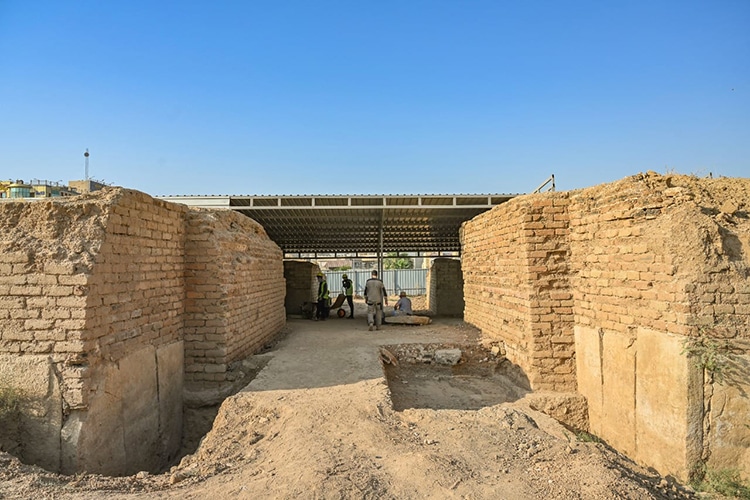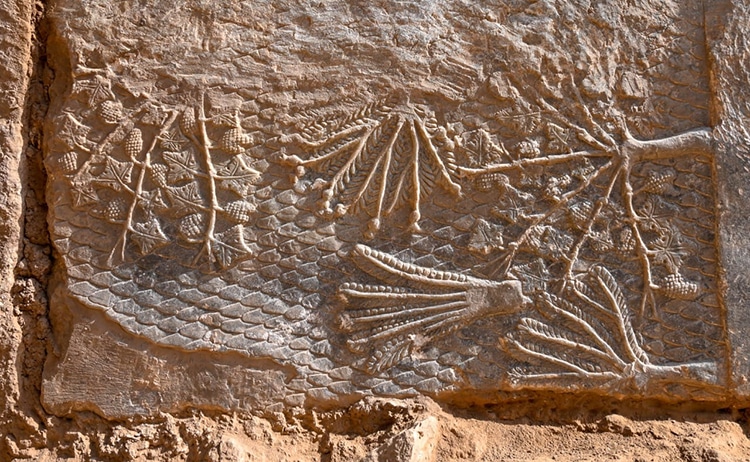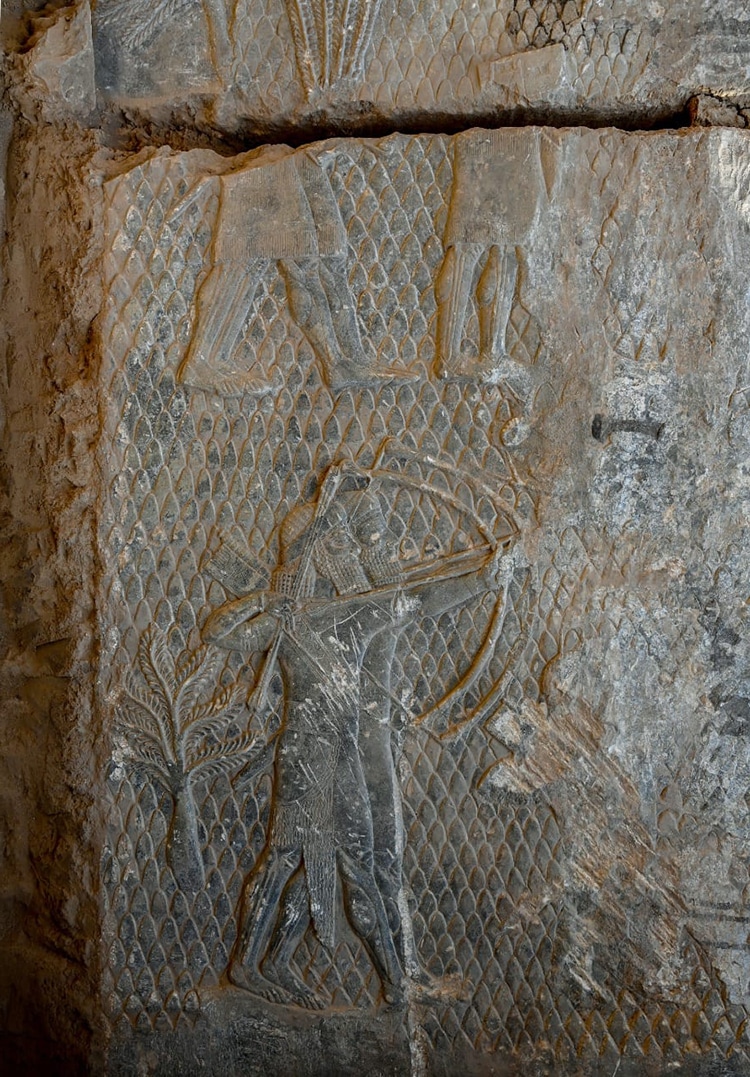
The archeological site of the Mashki Gates. (Photo: Iraqi State Board of Antiquities & Heritage)
In 2016, the militant group ISIS dealt a sharp blow to world history. The group—known for their hatred of pre-Islamic structures—destroyed the archeological sites of the Mashki and Adad Gates. These gates were part of the fortification wall at Nineveh, an ancient city in what is now Iraq. The 7th-century BCE structures were rebuilt in the 20th century, but many ancient components were still on site. The Iraqi State Board of Antiquities & Heritage announced that seven of these remnants—ancient stone slabs carved with intricate designs—have recently been recovered.
Ancient Nineveh, on the outskirts of modern Mosul, was an ancient center of trade and religion on the Tigris River. It served as the capital of the powerful Assyrian Empire, which had writing systems and powerful regional control. The city was surrounded by a wall with 15 gates, among them the Mashki Gate, known as the “Gate of the Watering Places.” The gate is considered highly symbolic and an iconic part of the Mosul landscape, especially since its 20th-century restoration. Unfortunately, ISIS used bulldozers to destroy much of this awe-inspiring structure.
Restoration projects have commenced since the recapture of the area by the Iraqi government. American and Iraqi archaeologists in a concerted effort uncovered eight marble slabs which decorated the ancient gate and which survived slightly damaged. The slabs date to the reign of King Sennacherib from 705–681 BCE. They likely decorated his imperial palace within the city walls before being moved to adorn the gate during a subsequent ruler’s heyday. The reliefs were partially buried when they were affixed to the gate, preserving the underground portions while the exposed carvings weathered. They depict classic Assyrian art motifs: archers, grapevines, and palm trees.
“We were all awestruck and virtually speechless. It was like a dream,” University of Pennsylvania archaeologist Michael Danti, of the Iraq Heritage Stabilization Program, told CNN. “No one predicted that we would be finding Sennacherib reliefs in a city gate.” She added, “Access to cultural heritage is a human right, and groups like ISIS want to sever those links forever as part of their campaign of cultural cleansing and genocide.” The Mashki Gate will soon become an educational center to teach about the historic city of Nineveh.
During the reconstruction of Iraq’s ancient Mashki Gate, archeologists discovered marble, carved slabs decorated with ancient Assyrian carvings.

A close up on a floral carving on marble. (Photo: Iraqi State Board of Antiquities & Heritage)
The reliefs feature archers with bows, grapes, and palm trees.

Assyrian soldiers with bows and arrows. (Photo: Iraqi State Board of Antiquities & Heritage)
The reliefs survived, at least partially, ISIS’s attempted destruction of the gates in 2016.
Finding the carved slabs was a stroke of luck and an important moment in preserving Iraqi history.
h/t: [Smithsonian Magazine]
Related Articles:
17,000 Looted Ancient Artifacts Return to Iraq in Massive Repatriation
Scientific Facial Reconstruction Brings Three Medieval Scots Back to Life
Archeologists Discover Rare Roman Mosaic With Trojan War Motif in Syria
4,000-Year-Old Assyrian Tablet Discovered Is an Ancient Prenuptial Agreement
